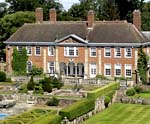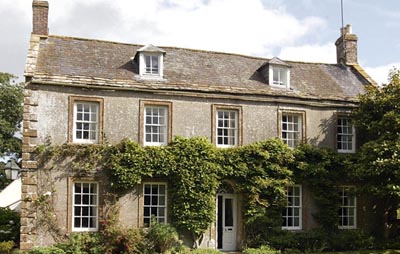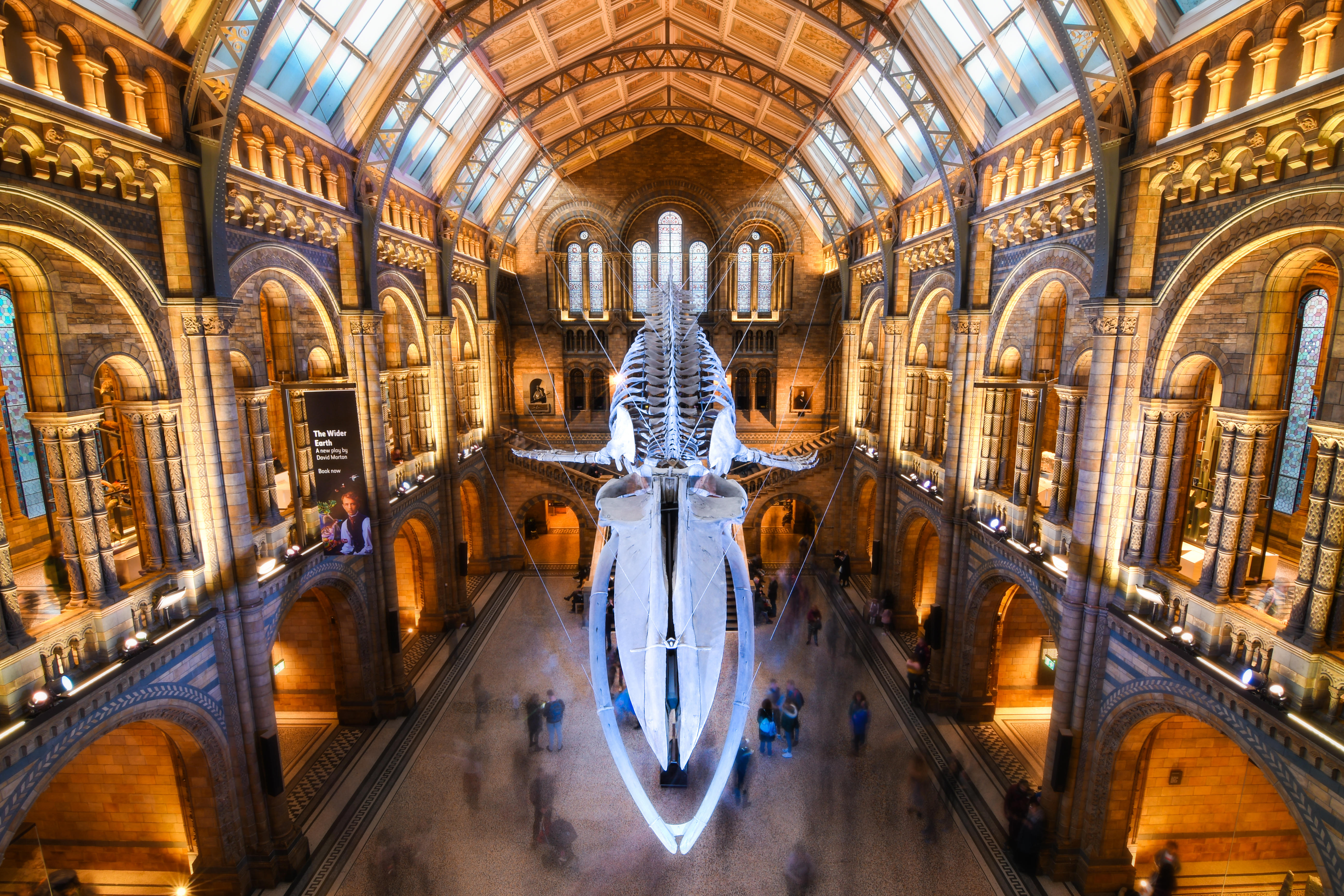Buying the Country Life dream
A clutch of historic properties launch to the market


IN the late 1980s, Country Life's famous Dream Country House survey set out to establish what, in the view of its readers, constituted the perfect country home. The consensus was ‘a Georgian old rectory surrounded by its own land, somewhere in the West Country'. More than two decades later, country estate agents are still bemoaning the fact that there are never enough old rectories around to satisfy the constant demand.
Today, the sale of a classic 18th-century former rectory in Dorset offers buyers the chance to live at least part of that Country Life dream. On the market for only the second time in its 230-year history, The Old Rectory at Glanvilles Wootton, deep in the heart of Hardy country between Sherborne and Dorchester, is being launched at ‘offers over £1.5 million' by Strutt & Parker (01722 344010), following the death in February of its long-term owner, the former Country Life diarist and polo corres-pondent David Edelsten.
The Old Rectory, listed Grade II, was built of stone under a slate roof in about 1780; the imposing Georgian façade was added to the south front in the early 1800s. Set at the end of a long private drive, the house stands in peaceful seclusion next to the pretty village church of St Mary the Virgin (restored in 1876 with help from Thomas Hardy), surrounded by more than three acres of part-walled gardens, orchard and paddock.
To the rear, a courtyard of traditional outbuildings includes a former coach house and stabling, part of which could be incorporated into the main building to provide extra living space-over and above the 5,000sq ft former rectory's three reception rooms, two kitchens, six bedrooms, three bath/shower rooms and numerous ancillary rooms.
On the other side of the courtyard is a small, detached building, previously used as a surgery by David's father, Alan, a much-loved country GP, who bought The Old Rectory from the Church in 1945, and rode around the parish on horseback to visit his patients. David inherited his love of both Dorset and horses, and in 1987, on retiring from the army as a brigadier-he had commanded the 13th/18th Royal Hussars (Queen Mary's Own)-he returned to his childhood home, having bought out his brothers when his father died.
After his years of soldiering, followed by charity work, David embarked on his ‘third career' as a writer, penning books about his two favourite subjects, and captivating the readers of Country Life and Horse & Hound with accounts of his exploits (and mishaps) in the hunting field. His stepdaughter Melanie Cable-Alexander, who went to live at The Old Rectory as a teenager following David's marriage to her mother, Diana, recalls hours spent riding around the Dorset countryside while David pointed out landmarks associated with another of his passions, the works of Thomas Hardy.
‘Hardyesque' is how Miss Cable-Alexander sums up life at The Old Rectory and the special ambience of the house itself, where little has changed since Alan Edelsten's day, although a new owner may be tempted to add a few modernising touches here and there.
Sign up for the Country Life Newsletter
Exquisite houses, the beauty of Nature, and how to get the most from your life, straight to your inbox.

No updating will be needed at another delightful Dorset former rectory, The Old Rectory at Stour Provost, near Gillingham, which has been inspirationally restored by its owners, chancery lawyer David Lowe QC and his wife, Vivian, during their eight-year tenure. Having completed a similar renovation at another rectory on the other side of Shaftesbury, where they lived for 18 years with their five children, Mr and Mrs Lowe feel that they still have another project in them, and are preparing to up sticks and move again, once Knight Frank (01935 812236) have found a buyer for their present home, which carries a guide price of £3m.
The village of Stour Provost was once part of a 3,000-acre estate given by Henry VI to King's College Cambridge. The rectory was built in 1828 for John Tom-kyns, the former Vice-Provost of King's College, and designed by William Wilkins, professor of architecture at the Royal Academy, along the lines of his own house in Cambridge, which was demolished in 1955. As Vice-Provost, Tomkyns had worked with Wilkins on new buildings at King's College, including the entrance screen and gateway next to the chapel.
The Old Rectory's previous owner, a retired Irish diplomat, had lived there quite happily for 28 years, without ever indulging in serious maintenance. When they bought the house, the Lowes had been planning to downsize, but instead, they embarked on a frenetic, three-year renovation programme, rebuilding the roof and ‘all six chimneys', installing new heating, plumbing and electrical systems, reinstating rooms, building various extensions and settling occasional ‘differences' with the North Dorset planners.
The result is a triumphant blend of style and authenticity. The Old Rectory, listed Grade II, is a 21st-century Arcadia, with elegant reception rooms, a modern country kitchen, master and guest suites, five further bedrooms and two bath/shower rooms. Set in three acres of gardens on the banks of the River Stour, it comes with a three-bed-room cottage, a range of out-buildings, a hard tennis court and a kitchen garden with a number of well-defined ‘garden rooms'.
A recent survey carried out by a national newspaper suggests that most British homeowners are resigned to the fact that they will never live in the house of their dreams. But that won't apply to the new owner of pristine, Grade II-listed Rudge Hall near Pattingham, Shropshire, described as ‘the perfect country house' by selling agent Tony Morris-Eyton of Savills (01952 239500). He quotes a guide price of £4m for the handsome, Grade II-listed, red-brick house set in 70 acres of glorious parkland, once part of a large estate owned by the Wright-Boycott family from the late 1800s, before being sold by them in 1921. The hall, which has medieval origins, was rebuilt in Victorian times, and remodelled by James A. Swan in the early 1930s with two quite different Georgian façades.
Here again, there is virtually nothing for a new owner to do, although, as Mr Morris-Eyton sagely observes, ‘rich men will always do whatever they think needs doing'. Rudge Hall sits on high ground, a mile from the village of Pattingham on the Shropshire/Staffordshire border, and has spectacular westerly views over the Shropshire countryside. Set well within its formal gardens and parkland, the property comprises the seven-bed-room main hall and its out-buildings, which include the impressive three-storey ‘Monastery' -a 17th-century sandstone building with potential for redevelopment. Other estate houses include a two-bedroom lodge and a two-bedroom mews cottage with a pretty courtyard garden.
* Subscribe to Country Life and save £1 per issue
Country Life is unlike any other magazine: the only glossy weekly on the newsstand and the only magazine that has been guest-edited by HRH The King not once, but twice. It is a celebration of modern rural life and all its diverse joys and pleasures — that was first published in Queen Victoria's Diamond Jubilee year. Our eclectic mixture of witty and informative content — from the most up-to-date property news and commentary and a coveted glimpse inside some of the UK's best houses and gardens, to gardening, the arts and interior design, written by experts in their field — still cannot be found in print or online, anywhere else.
-
 Athena: We need to get serious about saving our museums
Athena: We need to get serious about saving our museumsThe government announced that museums ‘can now apply for £20 million of funding to invest in their future’ last week. But will this be enough?
By Country Life Published
-
 Six rural properties with space, charm and endless views, as seen in Country Life
Six rural properties with space, charm and endless views, as seen in Country LifeWe take a look at some of the best houses to come to the market via Country Life in the past week.
By Toby Keel Published
